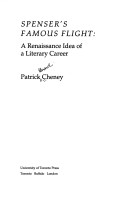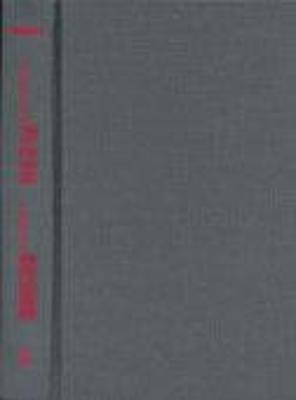Heritage
2 total works
In Spenser's famous Flight, Patrick Cheney challenges the received wisdom about the shape and goal of Spenser's literary career. He contends that Spenser's idea of a literary career is not strictly the convential Virgilian pattern of pastoral to epic, but a Christian revision of that pattern in light of Petrarch and the Reformation. Cheney demonstrates that, far from changing his mind about his career as a result of disillusionment, Spenser embarks upon and completes a daring progress that secures his status as an Orphic poet. In October, Spenser calls his idea of a literary career the 'famous flight.' Both classical and Christian culture has authorized the myth of the winged poet as a primary myth of fame and glory. Cheney shows that throughout his poetry Spenser relies on an image of flight to accomplish his highest goal.
Marlowe's Counterfeit Profession presents the first comprehensive reading of the Marlowe canon in over a generation. The occasion for Patrick Cheney's rereading is a primary discovery: Marlowe organized his canon around an "Ovidian" career model, or cursus, which turns from amatory poetry to tragedy to epic. Ovid had advertised this cursus only in his inaugural poem, the Amores, where its purpose was to counter the Virgilian cursus of pastoral, georgic, and epic. Marlowe was the first writer to translate the Amores, and thus the first to make the Ovidian cursus literally his own.Marlowe inscribes this cursus not simply to participate in the Renaissance recovery of classical authors, but in particular to contest the national authority of the 'Virgil of England,' Edmund Spenser. Using an Ovidian cursus to contest Spenser's Virgilian cursus, Marlowe enters the generational project of writing English nationhood. Unlike Spenser, however, Marlowe writes a 'counter-nationhood' - a nonpatriotic form of nationhood that subverts royal power with what Ovid calls libertas.By discovering the original project organizing an otherwise fragmentary canon, Cheney aims to change the most basic lens through which critics have viewed Marlowe: 'Shakespearean drama'.
This lens cannot account for two of the most striking features of Marlowe's canon: his scholarly use of translation and his writing of epic. Cheney proposes that a theatrical, Shakespearean model has prevented critics from discovering the original context within which Marlowe produced his art: a multimedia, multi-genre Spenserian model of Ovidian counter-nationhood.
This lens cannot account for two of the most striking features of Marlowe's canon: his scholarly use of translation and his writing of epic. Cheney proposes that a theatrical, Shakespearean model has prevented critics from discovering the original context within which Marlowe produced his art: a multimedia, multi-genre Spenserian model of Ovidian counter-nationhood.

